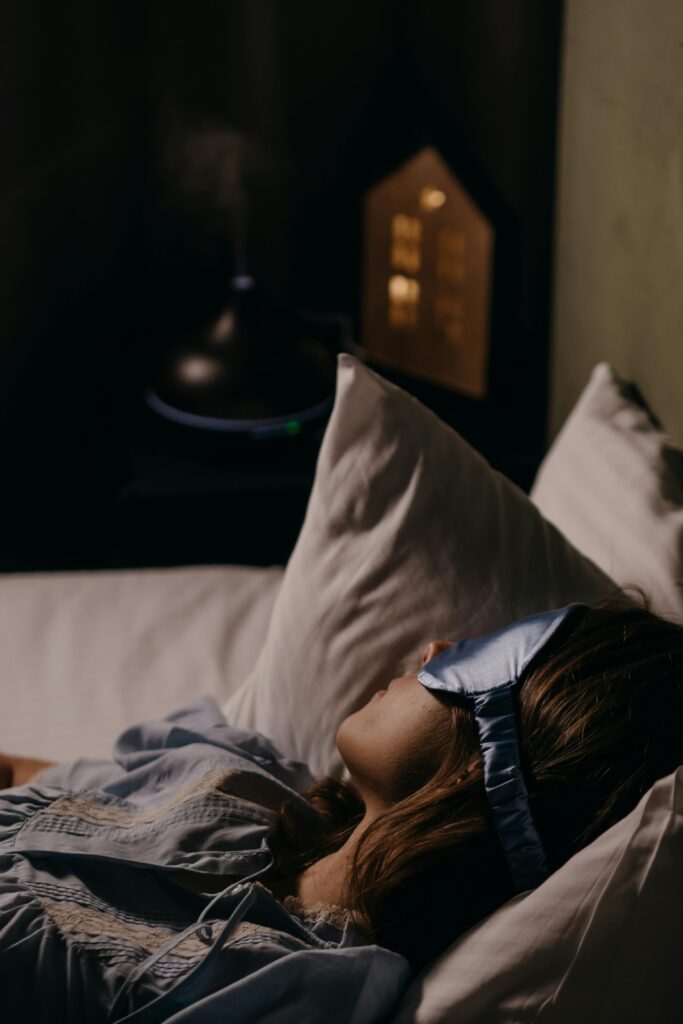Spread the love
Here’s a breakdown of how to improve sleep when dealing with sciatica, or how to Sleep With Sciatica:

01. Understanding Sciatica and How It Affects Sleep
- What is Sciatica? Sciatica refers to pain that radiates along the sciatic nerve, which runs from the lower back through the hips and down each leg. This pain is typically caused by herniated discs, spinal stenosis, or pinched nerves.
- How Sciatica Disrupts Sleep: The pain is often sharp or throbbing and can worsen at night when lying down, making it difficult to get comfortable and fall asleep.

02. Optimal Sleeping Positions for Sciatica Relief
- Sleeping on the Side with a Pillow Between the Knees: Lie on your side with your knees slightly bent, and place a pillow between them. This helps align the hips, pelvis, and spine, potentially relieving pressure on the sciatic nerve.
- Back Sleeping with a Pillow Under the Knees: Lie on your back and place a pillow under your knees. This helps maintain the natural curve of the spine and can alleviate lower back pressure.
- Avoid Stomach Sleeping: This position puts strain on the neck and can exacerbate sciatic pain. If stomach sleeping is your habit, transitioning to a different position can be beneficial.

03. Choosing the Right Mattress and Pillow
- Firmness Level: A medium-firm mattress often provides the right balance of support and comfort, helping align the spine and reduce pain.
- Mattress Material: Memory foam or hybrid mattresses tend to contour to the body and relieve pressure points better than traditional innerspring mattresses.
- Pillow Choice: A supportive pillow for the neck and, optionally, knee pillows (contoured or regular) can help maintain alignment.

04. Using Heat and Cold Therapy Before Bedtime
- Cold Packs: Applying an ice pack on the lower back for 15-20 minutes can help numb pain and reduce inflammation, especially if the pain is acute.
- Heat Therapy: Using a heating pad or warm towel can relax muscles and improve blood flow, which may reduce pain before sleep.
- Alternating Therapy: Some people find relief by alternating between cold and heat therapy before bed. Test what works best for you.

05. Stretching and Relaxation Exercises
- Gentle Stretches: Certain stretches, like the reclining pigeon pose, knee-to-chest stretch, or seated spinal twist, target the piriformis muscle and lower back to relieve tension on the sciatic nerve.
- Yoga: Gentle yoga can ease sciatic pain by stretching and strengthening back muscles. Focus on poses that promote flexibility without causing strain.
- Progressive Muscle Relaxation (PMR): This involves tensing and relaxing each muscle group, which can alleviate pain-related tension and help you fall asleep faster.

06. Pain Management Techniques and Medication
- Over-the-Counter Medications: Nonsteroidal anti-inflammatory drugs (NSAIDs) like ibuprofen may relieve mild to moderate pain.
- Prescription Medication: For severe cases, a doctor might prescribe stronger pain medications or muscle relaxants to be taken before bed.
- Avoiding Caffeine and Stimulants: Pain can already make it difficult to fall asleep, so avoiding caffeine and stimulants in the late afternoon and evening can prevent added difficulty.

07. Setting Up a Comfortable Sleep Environment
- Temperature Control: A cool room, around 65°F (18°C), is generally best for sleep. Adjusting the thermostat or using a fan can help keep pain at bay.
- Darkness and Sound Management: Blocking out excess light and sound can help relax you and focus on falling asleep rather than discomfort.
- Investing in Sleep Accessories: Consider items like weighted blankets (if they don’t worsen pain) or body pillows for added comfort.

08. Using Assistive Sleep Devices
- Adjustable Beds: These beds allow you to raise or lower different parts of the mattress, which may help align your body and relieve sciatic pain.
- Sleep Positioning Wedges: Foam wedges can be placed under the knees or back to help achieve a more comfortable and supported position.

09. Additional Tips for Improved Sleep with Sciatica
- Stay Active During the Day: Regular, low-impact exercise can reduce sciatica pain over time and improve sleep.
- Avoid Long Periods of Sitting: Long hours of sitting can aggravate sciatic pain, so incorporate movement into your day whenever possible.
- Consult a Professional: If the pain persists or worsens, seeing a physical therapist, chiropractor, or sleep specialist can provide additional relief techniques and treatments.

With these steps, you can take a proactive approach to improving sleep quality while managing sciatica pain.

Can You Sleep With A Tampon In 2024

Can You Sleep With A Concussion 2024



3 thoughts on “How To Sleep With Sciatica”